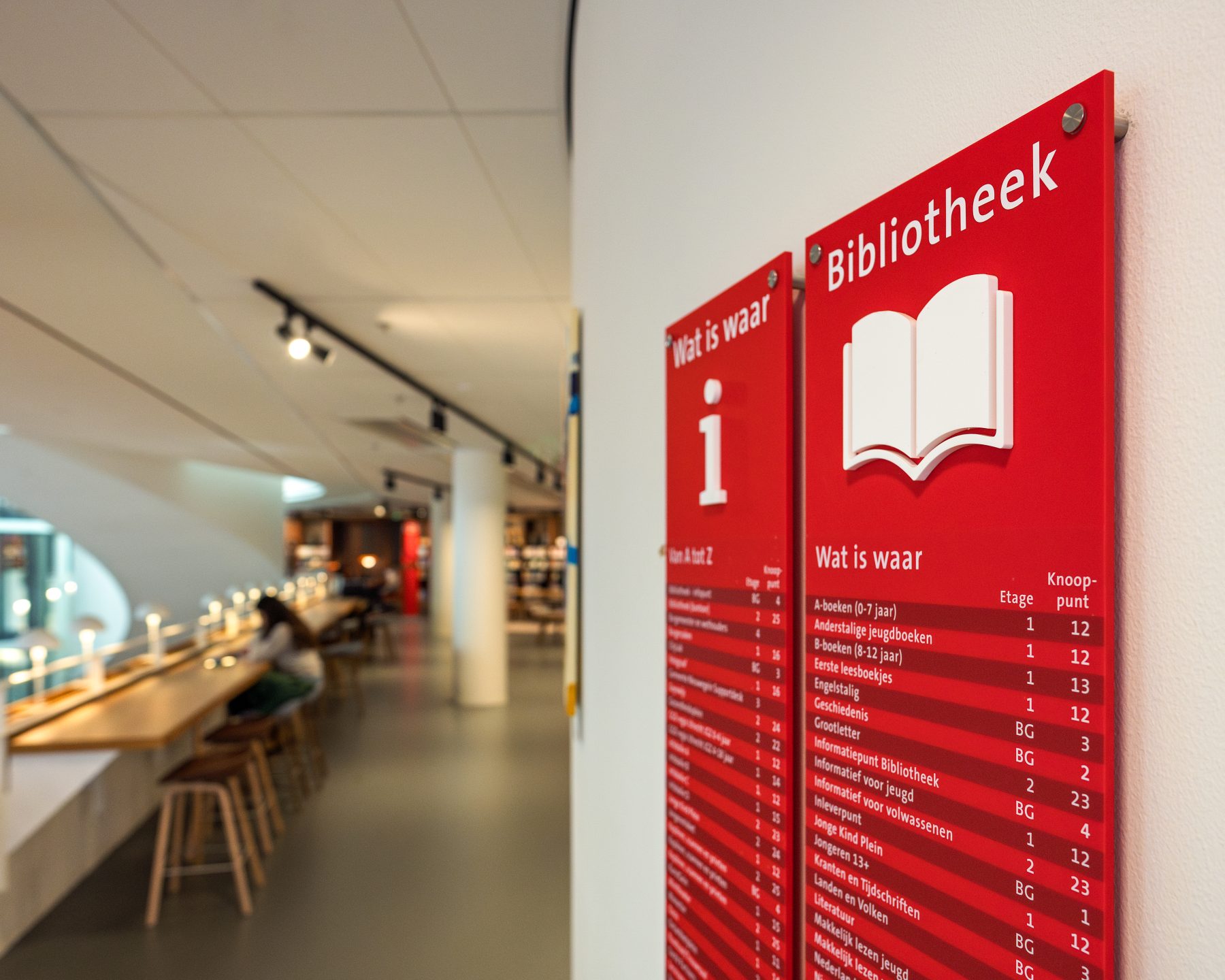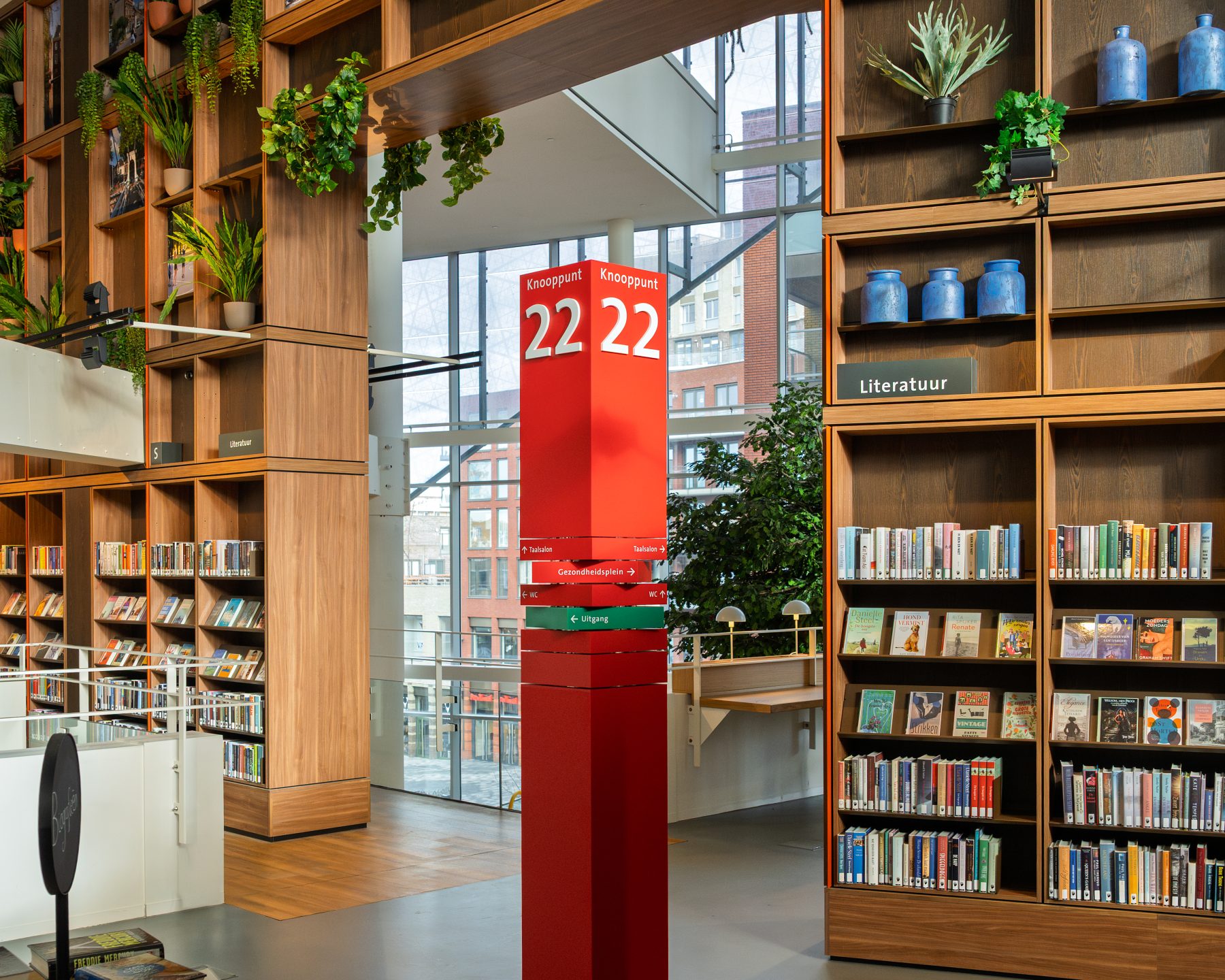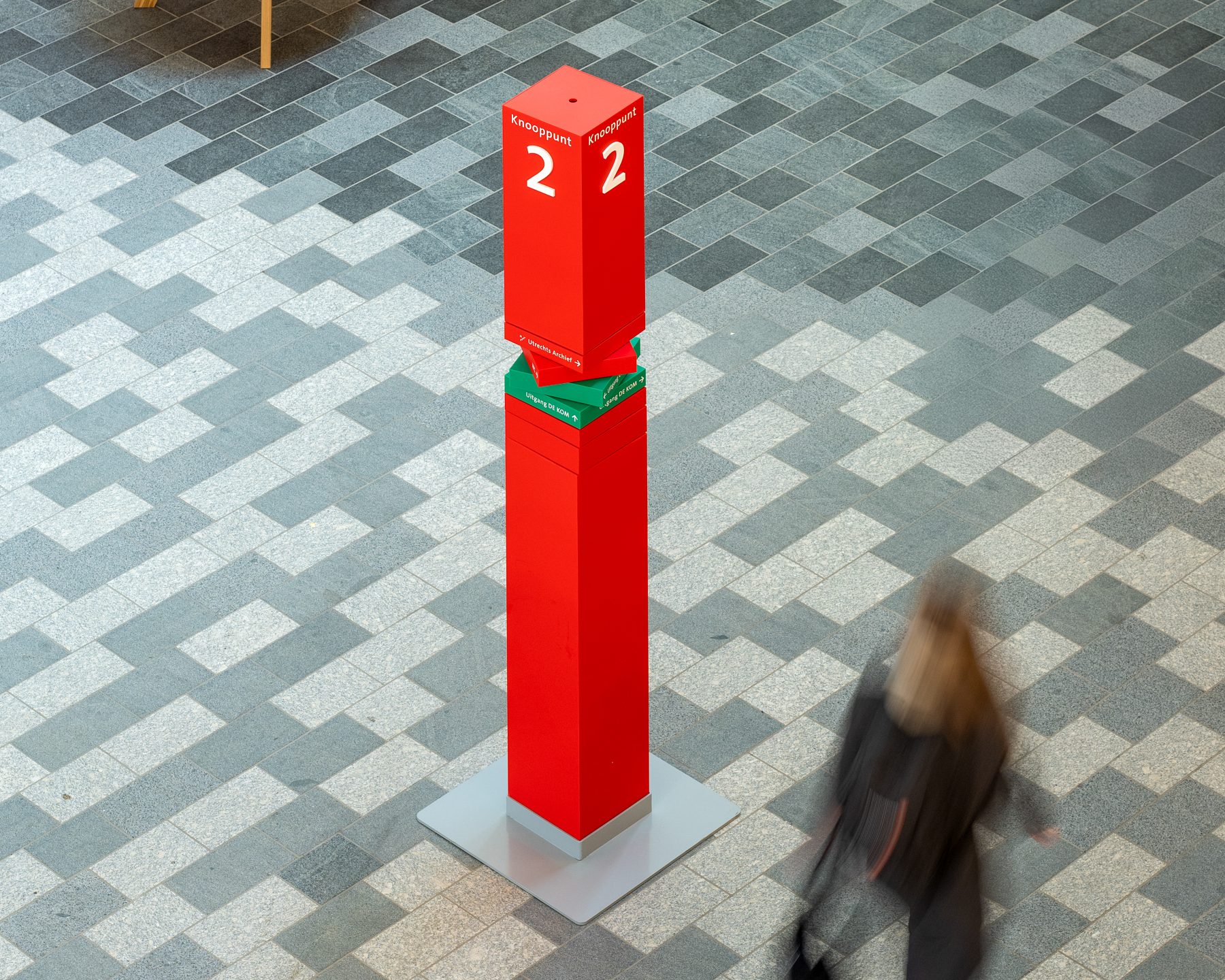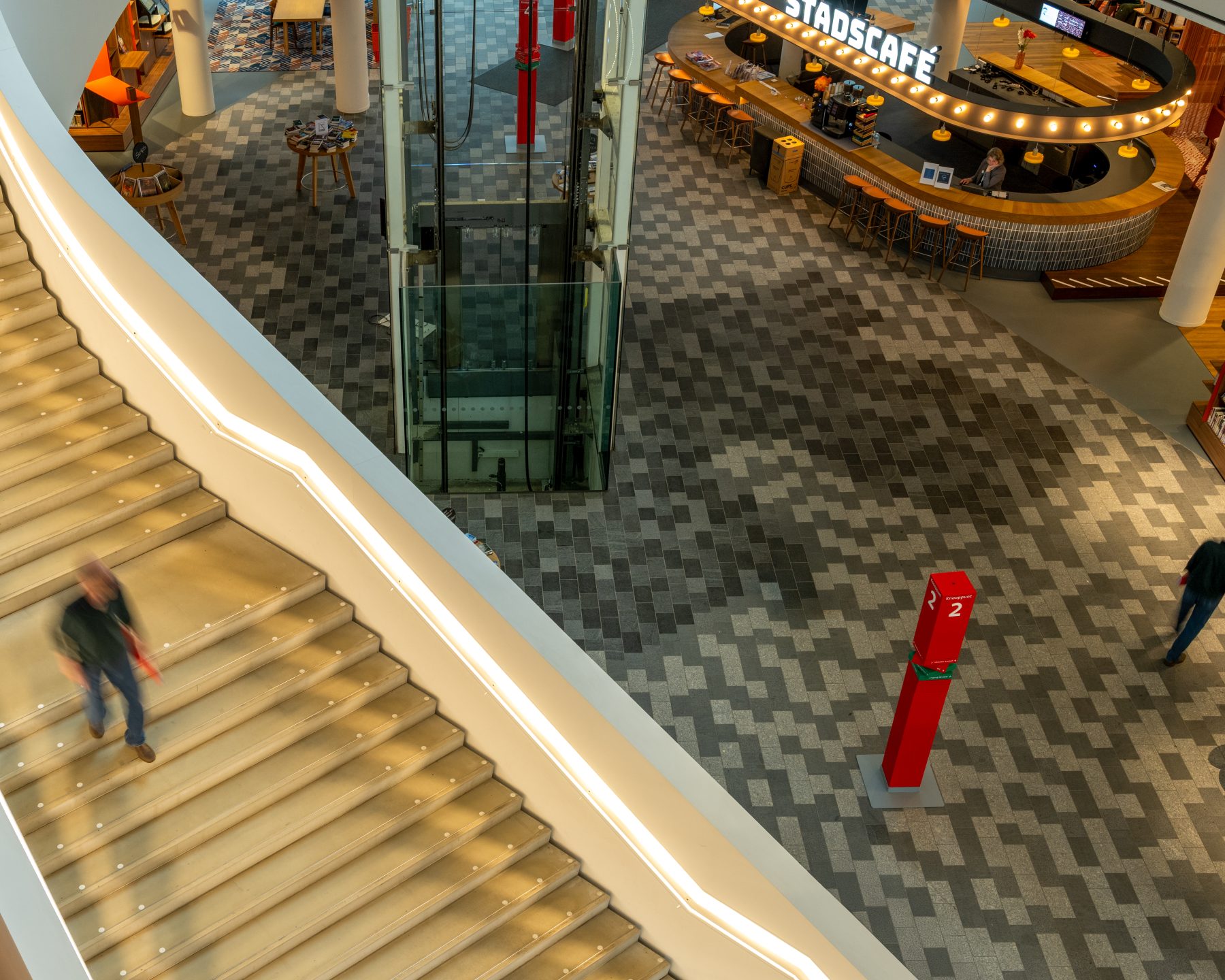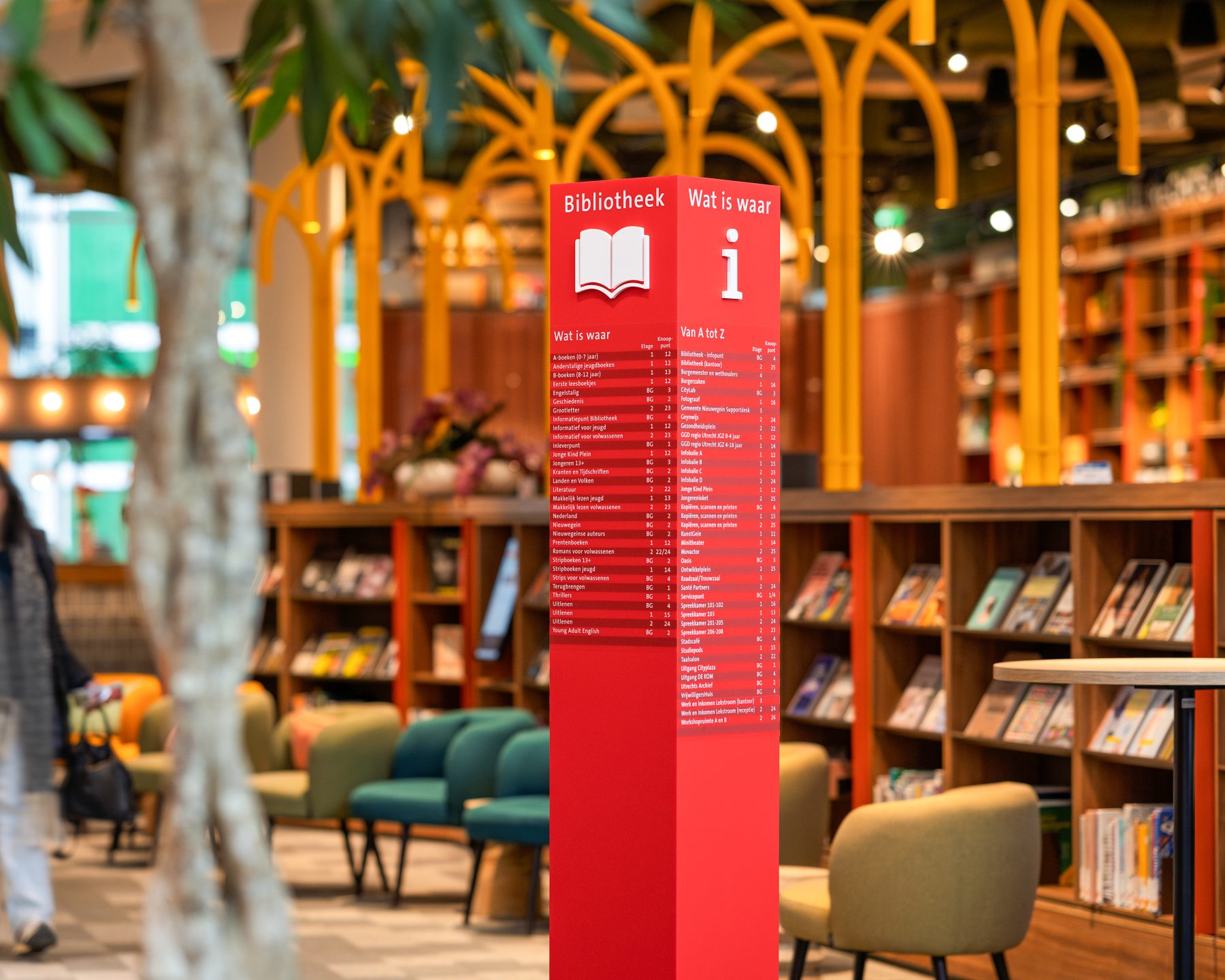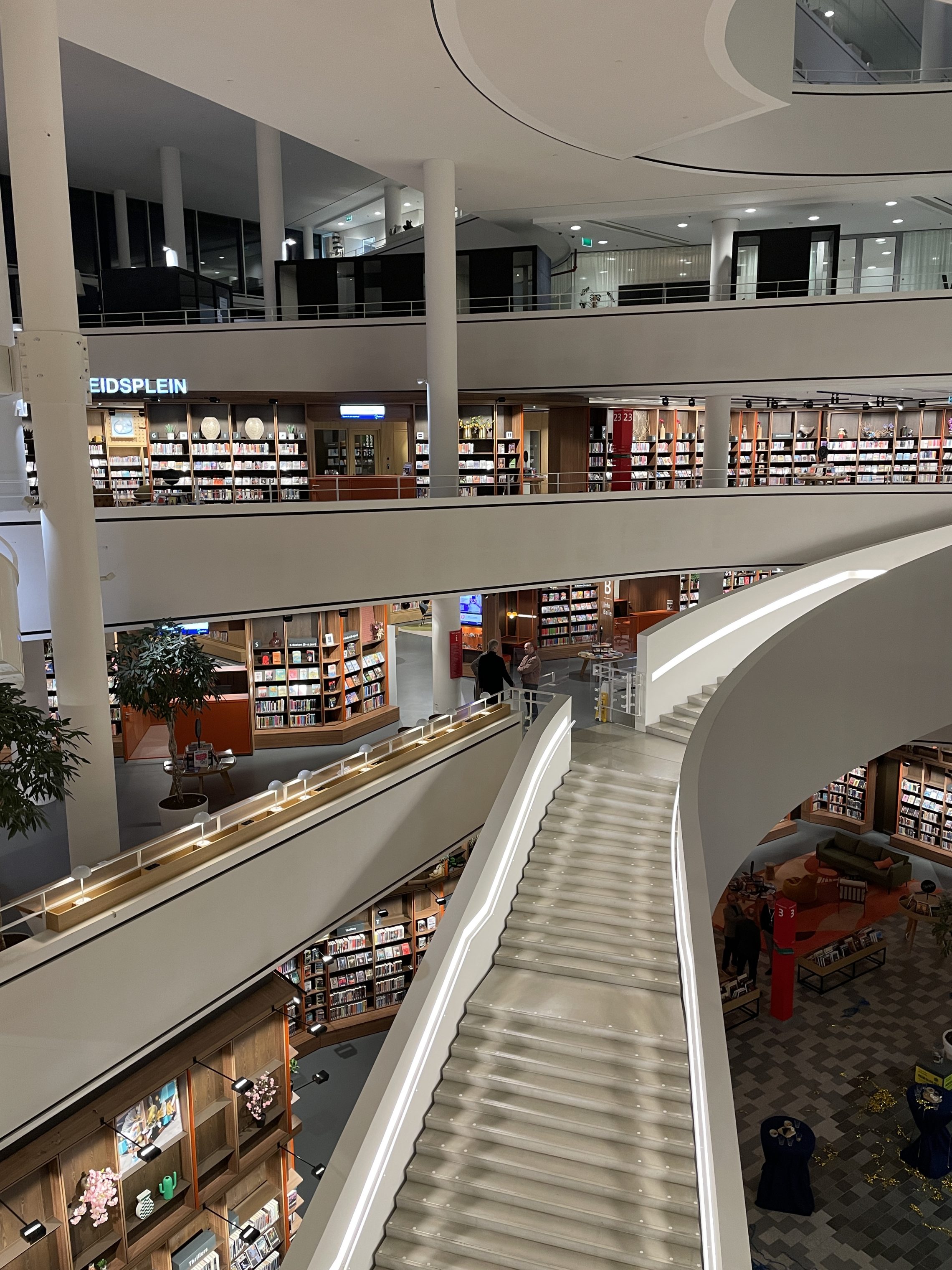Stadshuis Nieuwegein transforms a formal city hall into a welcoming home where diverse public functions merge into an accessible, warm interior space for everyone.
The Stadshuis Nieuwegein project, completed in January 2025, has evolved into a “house for the city” – a place where everyone feels welcome. What was once a formal city hall has evolved into a vibrant community hub where people can quickly handle practical matters like picking up a passport, borrowing a book, and much more. It’s a comfortable, social space where visitors can enjoy art and culture, meet others, work quietly, or relax and feel at home.

